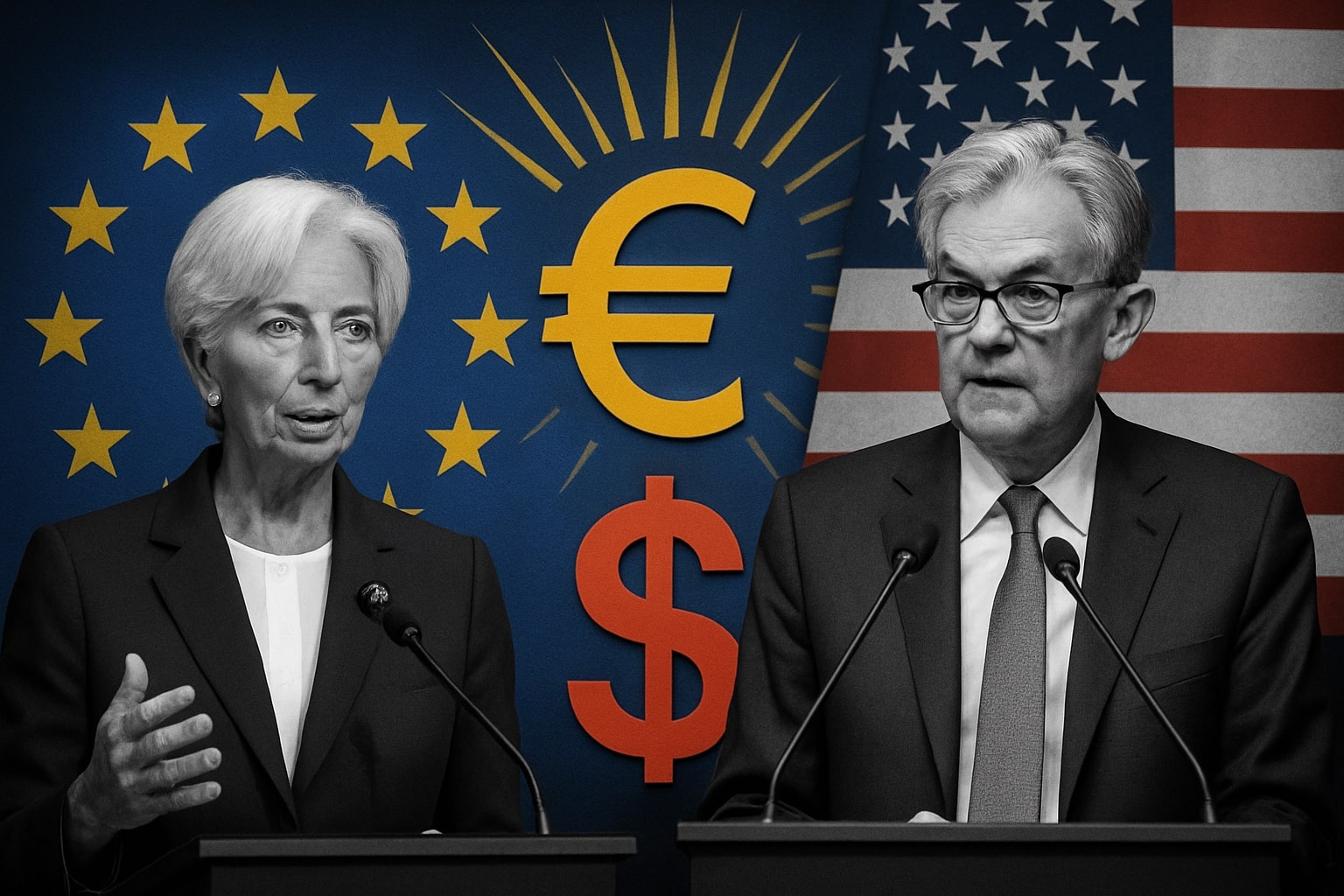
Bitcoin Price Forecast - BTC-USD Stabilizes at $112K With Trade War, Fed Policy, and ETF Flows
BTC defends key $107K support after $19B liquidation; corporate holdings top 1M BTC as ETFs inject $340M inflows | That's TradingNEWS
Bitcoin (BTC-USD) Battles Volatility as U.S.-China Tensions, ETF Flows, and Treasury Demand Collide
Macroeconomic Pressures Reignite Market Stress for Bitcoin (BTC-USD)
Bitcoin’s recent price action has been defined by an extraordinary tug-of-war between geopolitical turmoil and institutional accumulation. The world’s largest cryptocurrency fell as low as $109,000 on Tuesday before stabilizing near $111,820, as fresh U.S.–China trade tensions and a prolonged U.S. government shutdown rattled global sentiment.
Markets were shaken after Beijing imposed new port fees and rare earth export restrictions, responding to President Donald Trump’s threats to suspend imports of Chinese cooking oil and other goods. The escalation triggered a broad sell-off across risk assets. Bitcoin (BTC-USD), typically viewed as an inflation hedge, instead mirrored global risk aversion—declining nearly 2% and slipping below $112,500 midweek.
The crypto market’s overall capitalization shrank from $3.96 trillion to $3.75 trillion, wiping out $210 billion in 24 hours. Major altcoins like Ethereum (ETH-USD) and Solana (SOL-USD) also plunged before recovering slightly. Despite this turbulence, the medium-term setup for Bitcoin remains complex: institutional demand is climbing, yet macro headwinds continue to weigh on near-term price action.
Federal Reserve Dovish Shift Offers Temporary Relief
Federal Reserve Chair Jerome Powell provided a short-term cushion for BTC after hinting at an end to quantitative tightening and signaling that further rate cuts are “firmly on the table.” The CME FedWatch Tool now shows a 99.6% probability of a 25-basis-point cut at the October meeting, up from 97.4% last week.
BTC tends to perform strongly in easing cycles as lower yields drive capital toward high-beta assets. However, the ongoing U.S. government shutdown, now in its third week, has delayed critical economic data releases and the approval of altcoin ETF applications, undermining confidence. ETF approvals were expected to inject billions in liquidity this month, but the political deadlock has delayed a major catalyst for crypto inflows.
Record Liquidations and Leverage Reset Clear the Path for Recovery
Last week’s crash—when Bitcoin dropped from $122,550 to $102,000 in a single session—triggered the largest deleveraging event since March 2020. According to K33 Research, open interest plunged by over 50,000 BTC, and Binance’s BTC/USDT perpetual contracts traded at a record 5.1% discount to spot prices, marking the widest deviation since the COVID-era crash.
This massive liquidation wiped out over-leveraged positions, cleansing the derivatives market. Funding rates turned sharply negative, indicating traders had shifted to defensive stances. K33 analysts described the event as “healthy deleveraging,” noting that sentiment “flipped sharply bearish,” but the purge reduced systemic risk and set a cleaner foundation for a rebound.
Historically, such deep deleveraging phases often precede strong recoveries once liquidity returns. The BTC CME futures gap between $110,990 and $111,355—formed during the September 27–28 weekend—was filled on Tuesday, another technical sign suggesting a potential stabilization base.
Institutional Flows Signal Renewed Confidence
Despite near-term volatility, institutional demand remains strong. U.S. spot Bitcoin and Ethereum ETFs recorded $340 million in net inflows on Tuesday, following $755 million in outflows a day earlier. Fidelity’s FBTC led with $132.67 million in subscriptions, while ARK & 21Shares and Bitwise also posted gains.
This ETF rebound illustrates that investors continue to accumulate BTC on dips, viewing pullbacks as entry opportunities rather than trend reversals. BlackRock’s IBIT, however, saw a $30.8 million outflow, reflecting temporary risk-off positioning. The overall ETF ecosystem remains net positive for the month, showing sustained institutional conviction.
Meanwhile, Coinbase Global (NASDAQ:COIN) expanded its presence in Asia, investing in India’s CoinDCX at a $2.45 billion valuation, aiming to capture the region’s growing retail crypto base of over 100 million users. The move underscores that major U.S. exchanges still view global expansion as essential to offset domestic regulatory delays.
Corporate Treasuries Accumulate Over 1 Million BTC
A powerful structural shift continues beneath the surface: the number of companies holding Bitcoin has surged to 172, up 38% in Q3, according to Bitwise Asset Management. Corporate holdings have reached 1.02 million BTC, equivalent to 4.87% of total supply, worth roughly $117 billion.
MicroStrategy (NASDAQ:MSTR) remains the largest holder, controlling 640,250 BTC valued at $71.9 billion, followed by MARA Holdings (NASDAQ:MARA) with 53,250 BTC worth $5.9 billion. Analysts describe this institutional hoarding as a slow-motion liquidity drain that will amplify Bitcoin’s scarcity impact over time.
Bitwise CEO Hunter Horsley called the numbers “remarkable,” emphasizing that “companies are doubling down rather than retreating.” The accumulation has outpaced new supply—miners generate 900 BTC daily, while corporations collectively purchase 1,755 BTC per day. This structural imbalance strengthens the long-term bullish case even as short-term volatility persists.
Government Oversight and $15 Billion Seizure Tighten Market Regulation
The U.S. and U.K. authorities recently seized over $15 billion worth of Bitcoin connected to scam operations based in Cambodia, freezing associated assets including London properties. Prosecutors described the bust as one of the largest crypto-related fraud crackdowns in history.
Brooklyn U.S. Attorney Joseph Nocella stated that “the illegal investment networks have grown to alarming levels.” The seizure demonstrates how effective law enforcement has become at tracking blockchain flows, signaling more aggressive compliance oversight ahead. While regulation could pressure privacy coins, it strengthens institutional trust in BTC’s legitimacy as a traceable, compliant asset class.
Speculative Rotation and Short-Term Holders Dominate Market Activity
Blockchain analytics indicate that 97% of Bitcoin supply is now in profit, with short-term holders controlling 44% of realized capitalization, the highest on record. This implies that long-term investors are taking profits while new entrants absorb supply.
According to CryptoQuant, BTC is entering a speculative phase marked by increased turnover and rapid accumulation among “new whales.” However, unlike past cycles, ETF inflows and stablecoin liquidity are dampening volatility. The market remains orderly despite macro shocks, pointing to a maturing price structure that can withstand liquidation waves without cascading crashes.
Read More
-
AMD Stock Price Forecast - AMD At $210, $9.25B Q3 And 6GW OpenAI Catalyst
14.12.2025 · TradingNEWS ArchiveStocks
-
Ethereum Price Forecast - $3,100: Fed Power Shift & Weak On-Chain Activity Put 2026 Rally At Risk
14.12.2025 · TradingNEWS ArchiveCrypto
-
Gold Price Forecast - Gold Around $4,300 As Silver Spike And $4,356 XAU/USD Resistance Collide
14.12.2025 · TradingNEWS ArchiveCommodities
-
US Stock Market Forecast: S&P 500 at 6,827, Dow 48,458 as Fed Cut and Jobs–CPI Data Collide
14.12.2025 · TradingNEWS ArchiveMarkets
-
EUR/USD Price Forecast - Eur Holds Around 1.17 As Fed Cut And Euro Tests Multi-Month Resistance
14.12.2025 · TradingNEWS ArchiveForex
Technical Landscape: Range-Bound with Bearish Tilt
Technically, Bitcoin (BTC-USD) trades in a consolidation zone between $107,000 and $116,000, struggling to break above its 50-day exponential moving average (EMA) near $115,400. The 78.6% Fibonacci retracement from the April low of $74,508 to the October high of $126,199 aligns with that resistance zone.
The Relative Strength Index (RSI) sits at 42, confirming waning momentum, while the MACD remains in bearish crossover since Friday. If BTC breaks below $107,245, technical models point to a deeper retracement toward $93,000, a confluence of the 200-day moving average and long-term trendline support.
On the upside, clearing $116,000 could trigger a test of $120,000, while sustained closes above that level would reopen the path toward $123,000 and potentially $139,000—the projected target from the recent trading range extension.
Market Psychology and ETF Dynamics Define Near-Term Bias
The recent deleveraging and government seizures temporarily cooled speculative excess but also reset the risk-reward profile. With funding rates normalized and liquidity thin, Bitcoin now trades in an environment of cautious accumulation. The $112,000–$114,000 band acts as an equilibrium zone where buyers and sellers are balanced.
ETF inflows, dovish policy expectations, and surging corporate demand counterbalance macro risks and regulatory tightening. While sentiment remains fragile, institutional footprints are expanding faster than retail exit flows. This divergence suggests a market gradually migrating from speculative to structural ownership.
Final Outlook: Constructively Bullish Despite Volatility
Despite headwinds, the data signals resilience. Institutional balance sheets now absorb nearly twice the newly mined Bitcoin supply, ETFs have turned net positive, and global regulators are legitimizing BTC through enforcement and oversight. The cleansing of excessive leverage provides a healthier foundation for the next advance.
Technically, the $107,000 level remains critical support; holding it preserves the medium-term bullish structure. As long as the macro backdrop trends toward monetary easing and corporate demand remains elevated, Bitcoin’s downside appears limited.
Verdict: BTC-USD is a Buy on dips within the $107,000–$112,000 range, with short-term resistance at $116,000 and medium-term targets near $120,000–$139,000. Structural accumulation, ETF inflows, and supply scarcity continue to anchor Bitcoin’s long-term bullish trajectory—even as geopolitical and policy risks sustain volatility in the near term.


















